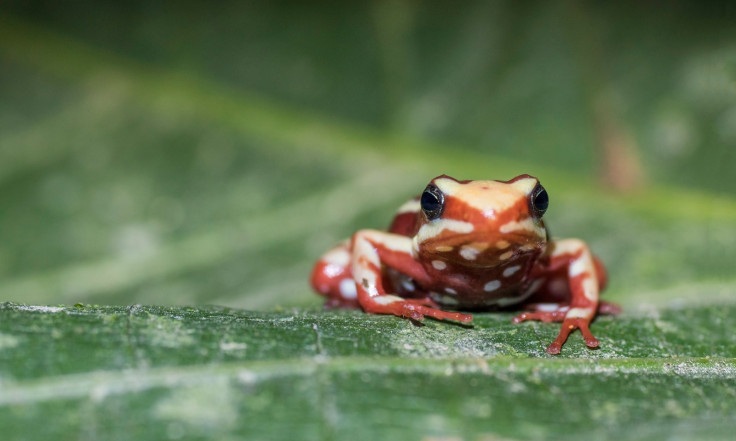Mystery of how deadly poison frogs never accidentally kill themselves finally solved
Tiny but deadly poison frogs have a clever way to stop themselves falling prey to their own venom.

A group of poison frogs that use the toxin epibatidine get around the problem of accidentally killing themselves with a clever genetic trick, scientists have found.
The venom of poison frogs can cause hypertension, seizures and death. The frogs escape the lethal effects of their venom with a tiny tweak of their genes for a crucial receptor, according to a study published in the journal Science.
The toxins act on receptors in the nervous system called nicotinic acetylcholine receptors. The toxin activates these receptors, causing bursts of activity that can lead incapacitate the frogs' victim.
Many animals have nicotinic acetylcholine receptors, including the frogs themselves. So why doesn't this toxin kill the tiny frog?
Scientists studied 28 different species of poison frogs to characterise their toxins and how they interact with the receptors. Several groups of frogs alighted on the same solution to the problem independently. One genetic mutation made their nicotinic acetylcholine receptors safe from the toxin, and a second allowed the receptor to do its original job – related to learning and memory.
"Being toxic can be good for your survival – it gives you an edge over predators," said study author Rebecca Tarvin of the University of Texas at Austin.
"So why aren't more animals toxic? Our work is showing that a big constraint is whether organisms can evolve resistance to their own toxins. We found evolution has hit upon this same exact change in three different groups of frogs, and that, to me, is quite beautiful."
The research could have medical applications, the researchers hope. Epibatidine is a powerful non-addictive painkiller. Understanding how receptors interact with the molecule could help the development process to create a drug that has the intended effects without the unwanted side effects.
"Every bit of information we can gather on how these receptors are interacting with the drugs gets us a step closer to designing better drugs," said study author Cecilia Borghese of the University of Texas at Austin's Waggoner Center for Alcohol and Addiction Research.
© Copyright IBTimes 2025. All rights reserved.






















